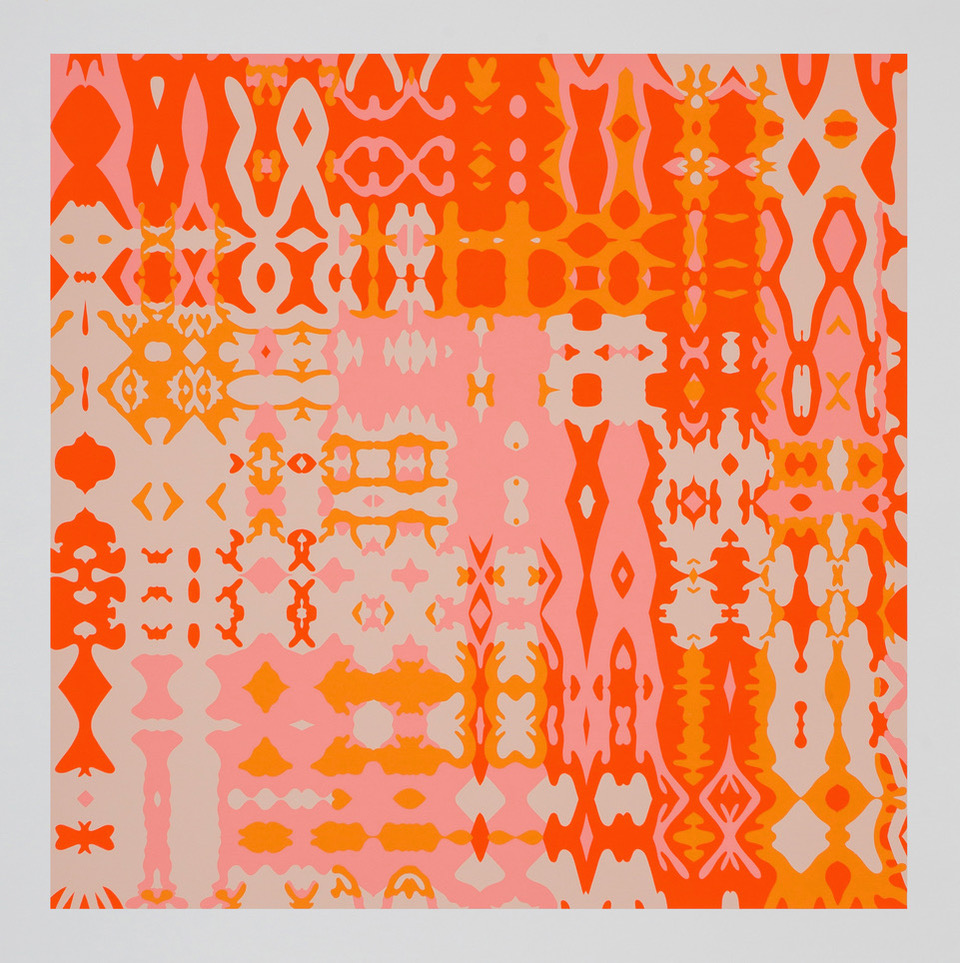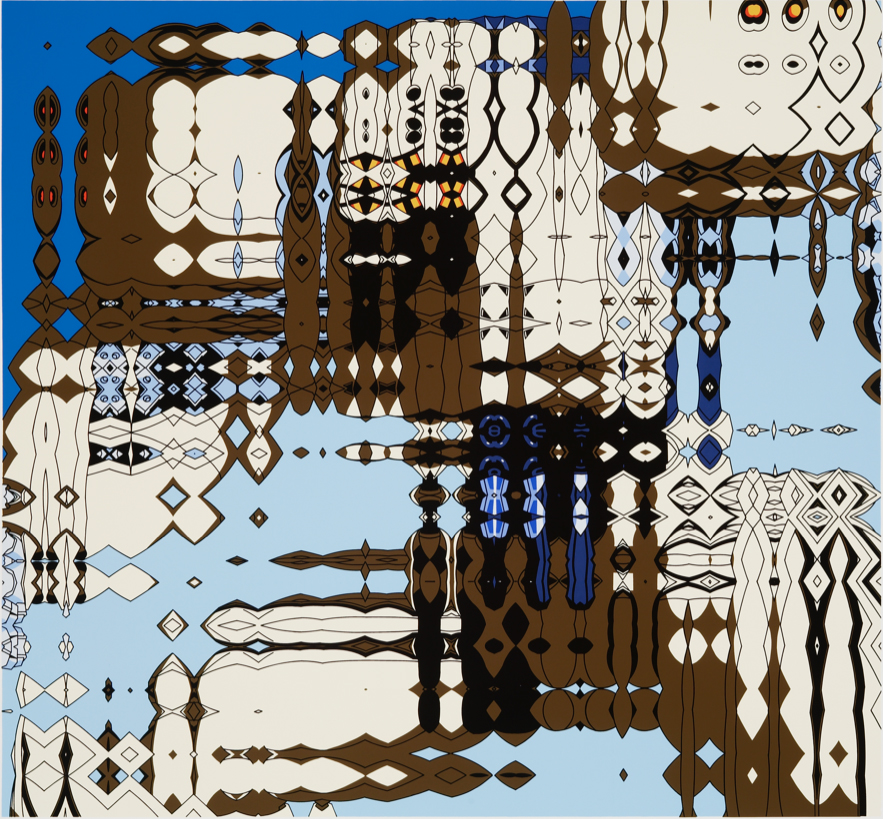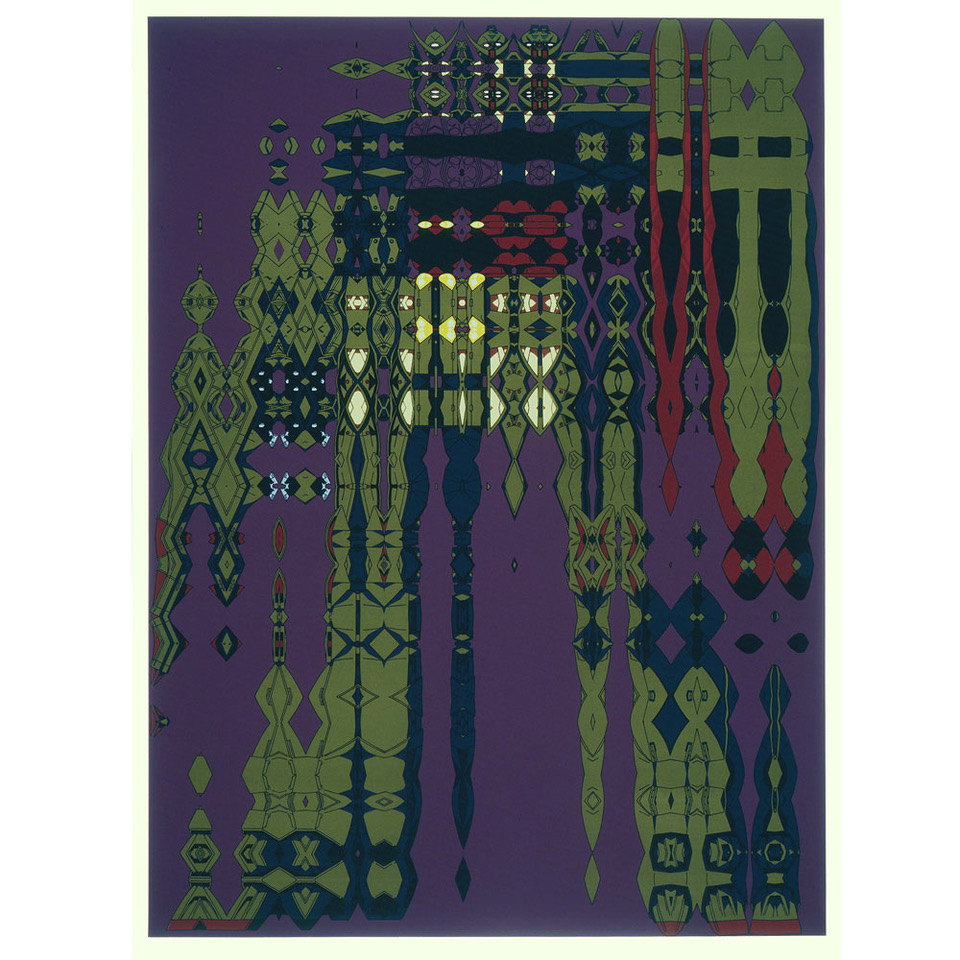by Gae Savannah

Puns abound in Carl Fudge’s work. An initial loom is formed of Japanese anime and Ukiyo-e prints. Child luminaries radiate mystical powers, while behind screens, kimonos beckon. To transmit the electricity felt in these genres, the artist wrote a program to simulate children’s paper cutouts. Thereby, applying the algorithm, hereconstitutes the Japanese visual systems into new offbeat schema. In Komposition B, snowflake-y shapes appear in punchy pinks and oranges. Then puzzle-piece lacunas recall Japanese usage of negative space,ma. Fudge’s use of this emptiness amidst the vibratory hues, makes the piece seem bigger than it is. The patterns are given to us close up, evoking a here-ness.

Contextualizing Fudge’s novel, graphic language can prove daunting. There’s the original appeal of the Japanese flatness, which ballasted Modernism. Then there are some parallels with the hard edge abstraction of someone like Jack Youngerman, (who also made prints referencing the Floating World). Also felt are the crisp digital lines of Manfred Mohr. Otherwise, one’s mind goes not to canonical contemporary art, but to maverick practitioners such as Lisa Alvarado, with banners inspired by Mexican weaving. Additionally, loosely invoked are ethnic textiles such as Ikat, religious architectural iconography, and even water patterns. Mirror-image concatenations of organic rhombuses brocade the upper corner of Tattooed Blue. Meanwhile, a shungafigure shape-shifts into a pale blue inlet, spilling across the composition. Then, in They’re Everywhere, curved and straight-edged minarets form an open weave. Echoing rhythmically across and down the square, they mesh into an unorthodox geometry. Mapless, one feels intoxicated by an exotic city.

Finally, Mobile Suite 5 is cut from a different cloth. Here, Fudge toys with another mesmeric lure, Transformers (also originating in Japan). More hinged to concept though, this piece lacks rich interplay among the spatial layers. Yet, on purple ground, the green spires and other inscrutable patterning still draw us in. All in all, not absent behind Fudge’s arch wit, is an underlying mirth, a relishing of visual pleasure – as if art can be indeed, a game of seduction.
